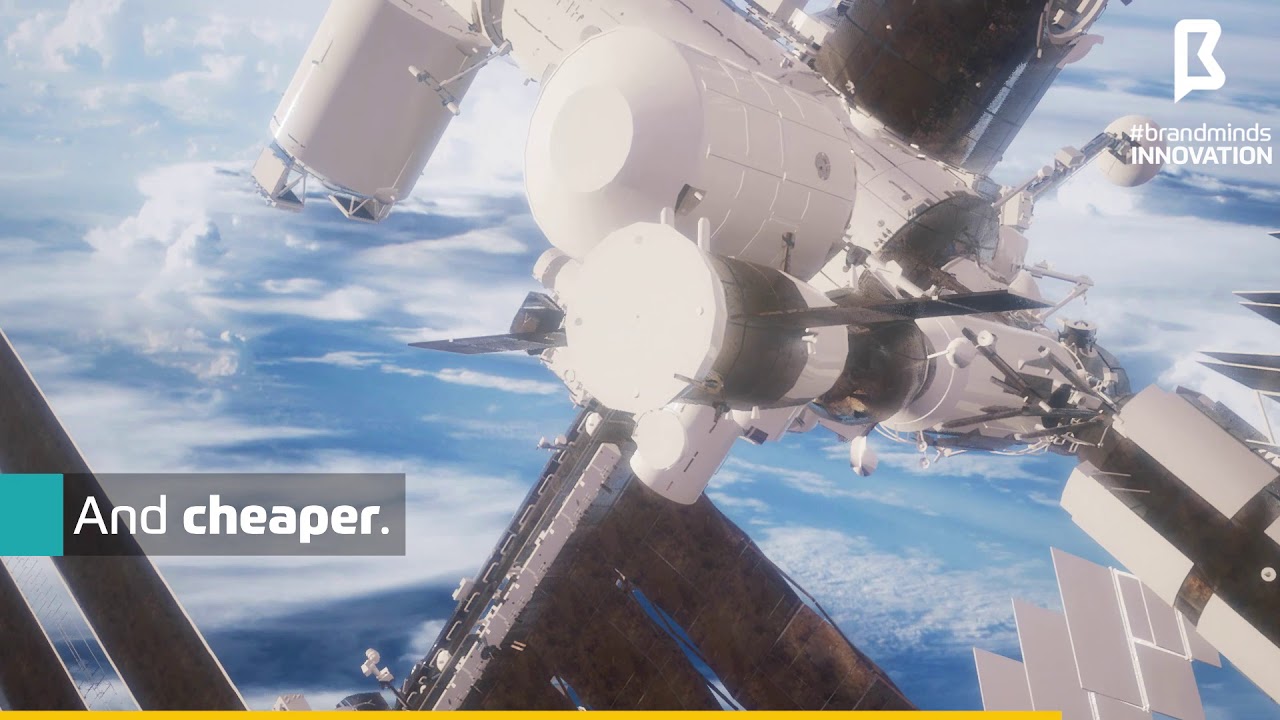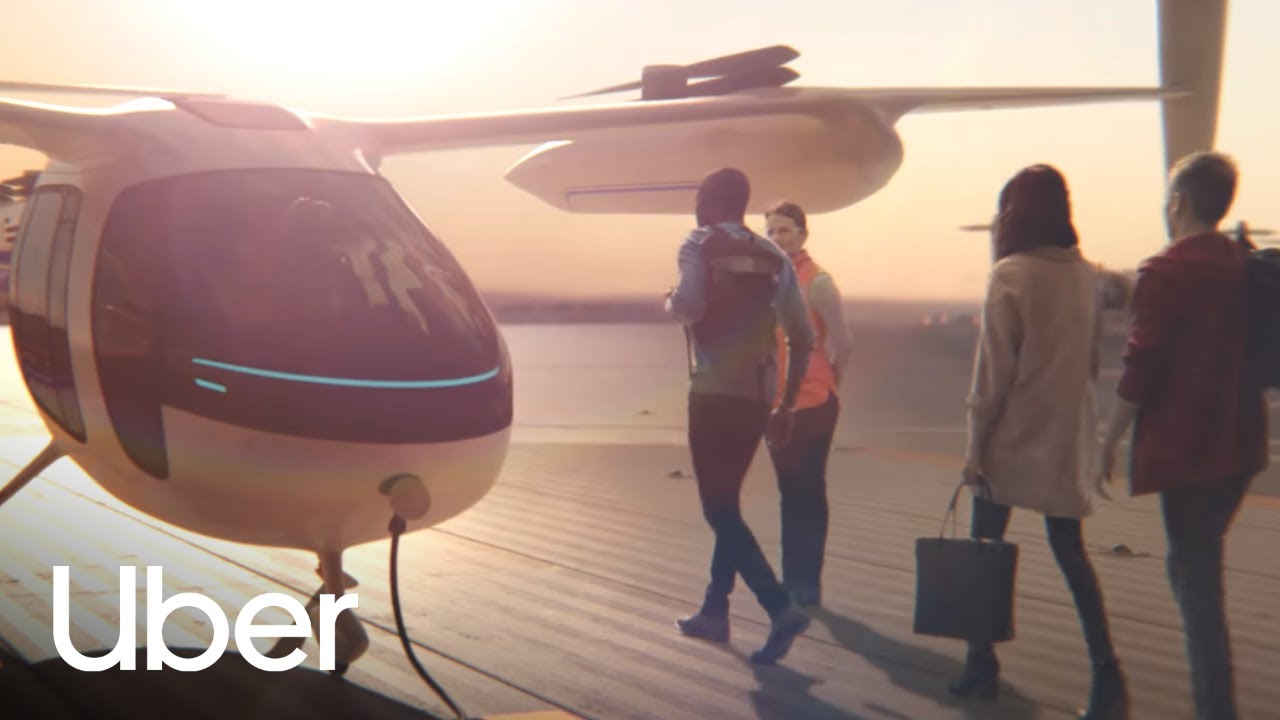What are the 4 types of innovation?
Innovation – the #1 soft skill companies are looking for
Last year, the World Economic Forum in collaboration with LinkedIn released its 2025 Future of Jobs report.
This report maps the jobs and skills in the next five years.
As you can see below, innovation ranks at #1 in the Top 10 skills employers are looking for in an employee in 2025.
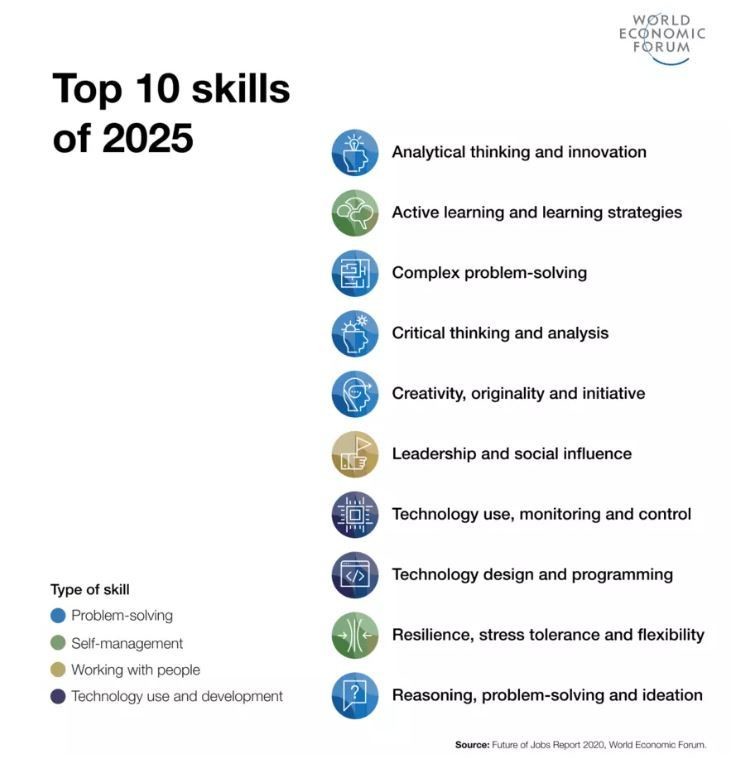
In 2020, the top most sought-after skill was creativity.
Why are employees expected to have analytical thinking and innovation skills? Why is creativity not enough?
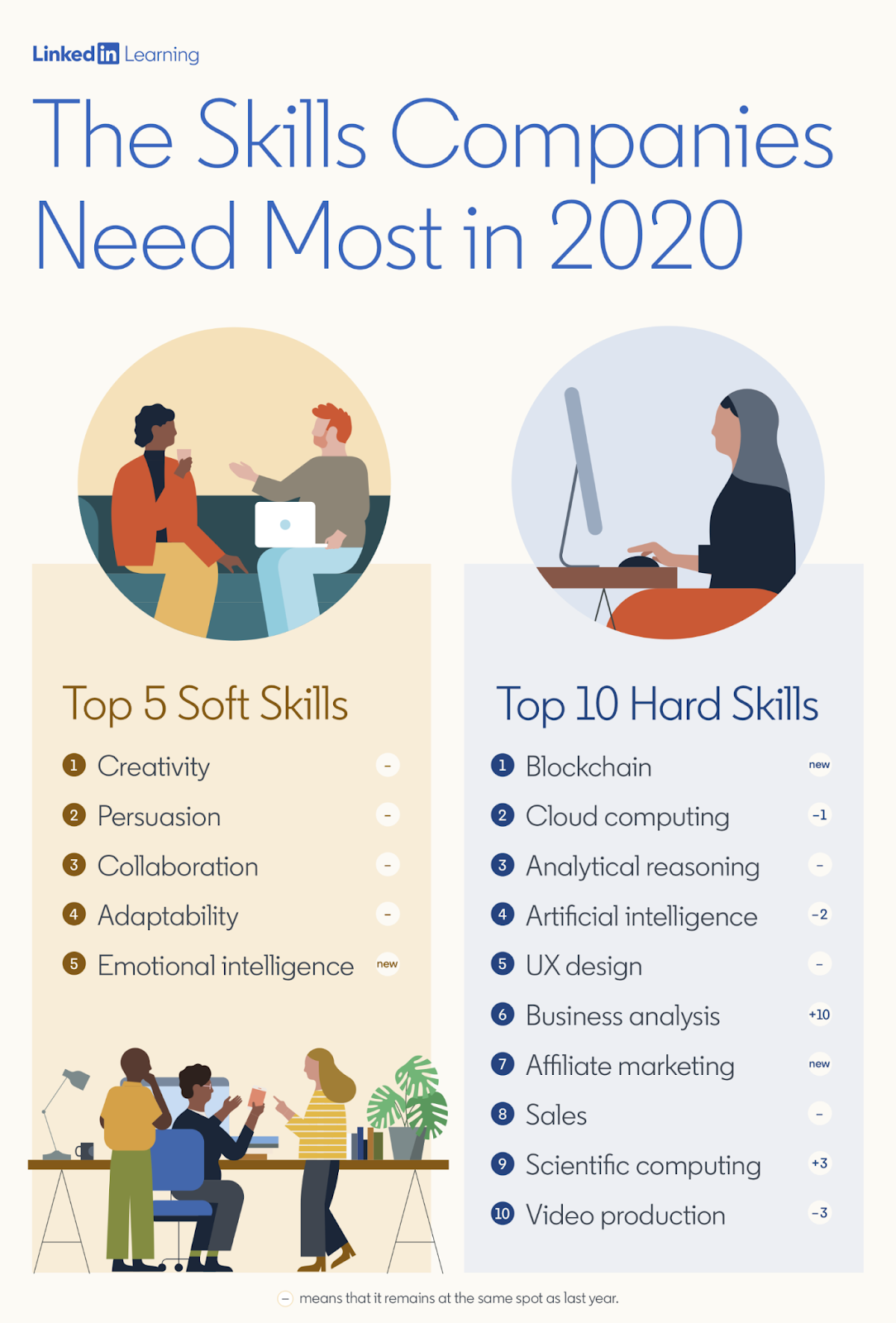
The World Economic Forum report answers this question with an in-depth list of key insights which I encourage you to read.
But if you want the short answer, here’s my conclusion.
The future of work is about automation and robots. The report found that by 2025, the time spent on current tasks at work by humans and machines will be equal.
While an AI software can do creative work (see the AI writing news or the AI doing movie trailers), software and automation robots cannot be innovative.
Innovation requires other skills besides creativity. Read on to find out what these skills are.
If innovation is not (only) creativity, then what is it? Is it a process? Is it a mindset?
First let’s establish the difference between creativity and innovation.
Creativity vs Innovation
On this subject, the best definition of innovation as opposed to creativity I could find is the following:
The key difference between creativity and innovation is that the first refers to generating a fresh and new idea, whereas the second implies initiating new service, product or invention to the market, which was not introduced before.
Creativity vs Invention vs Innovation
Let’s bring another term into the conversation, one that is commonly used to define innovation: invention.
Does invention equals innovation? And if it doesn’t, what’s the difference between invention and innovation?
To answer this question, here’s a great piece of content from Innoway, an innovation consultancy:
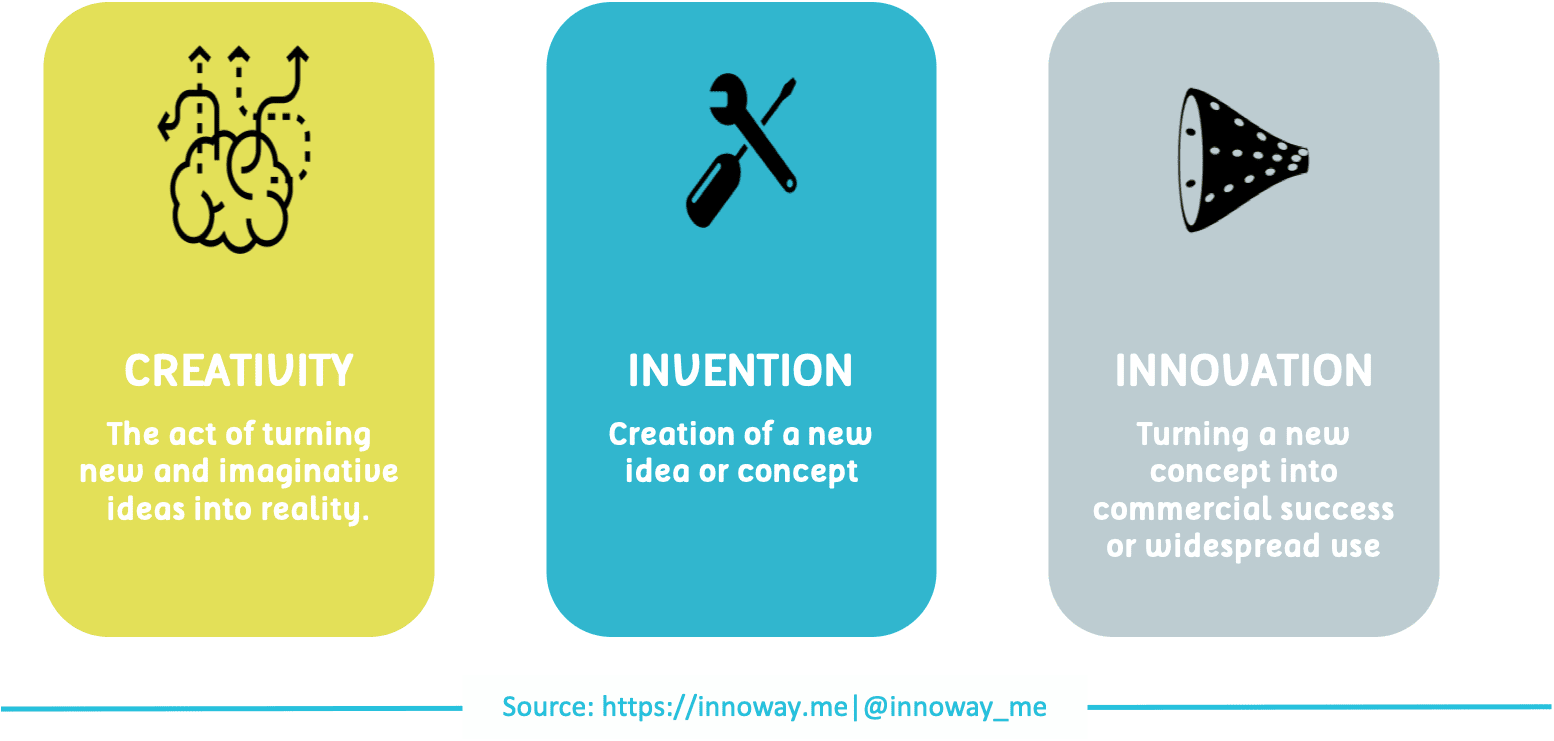
They do a great job of explaining the difference between creativity, invention and innovation.
Creativity is the art of turning new and imaginative ideas into reality.
Invention is the creation of a new idea or concept.
Innovation is turning a new concept into commercial success or widespread use.
Zaha Hadid’s amazing buildings are a testament to her creativity, but they are neither inventions, nor innovations.
Leonardo da Vinci, the famous painter was also a prolific inventor. Among his many designs was that of a helicopter which he called the Aerial Screw.
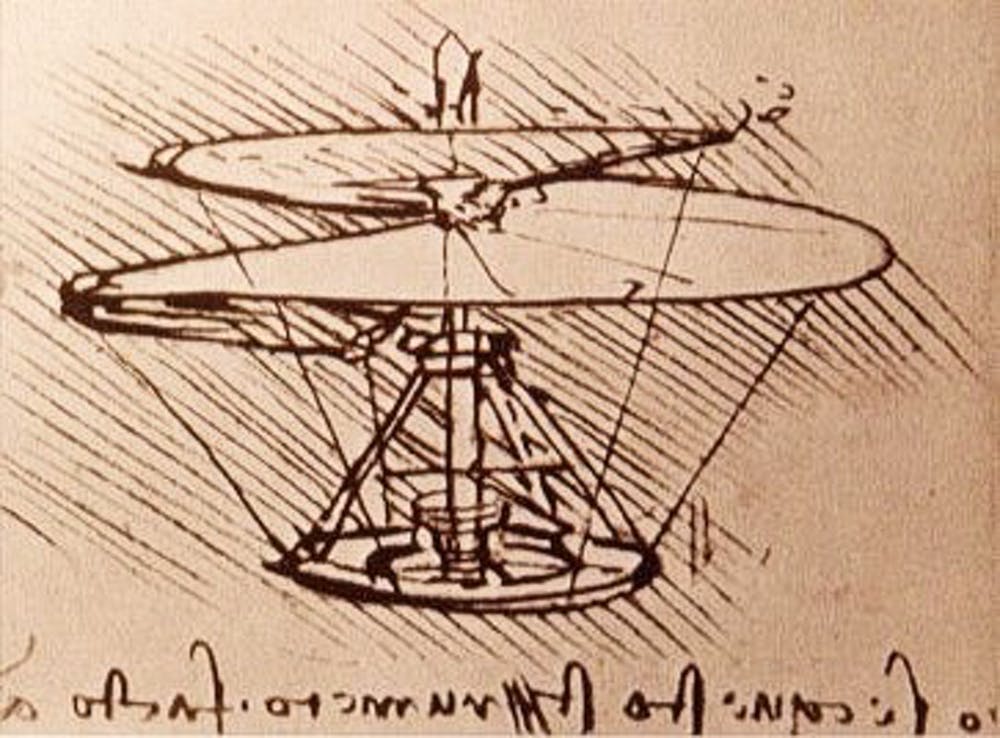
Leonardo da Vinci’s helicopter
If you look at da Vinci’s sketch dating back to the 1480s, you will notice a very strong resemblance with NASA’s Ingenuity Helicopter which took its first flight on Mars earlier this month.
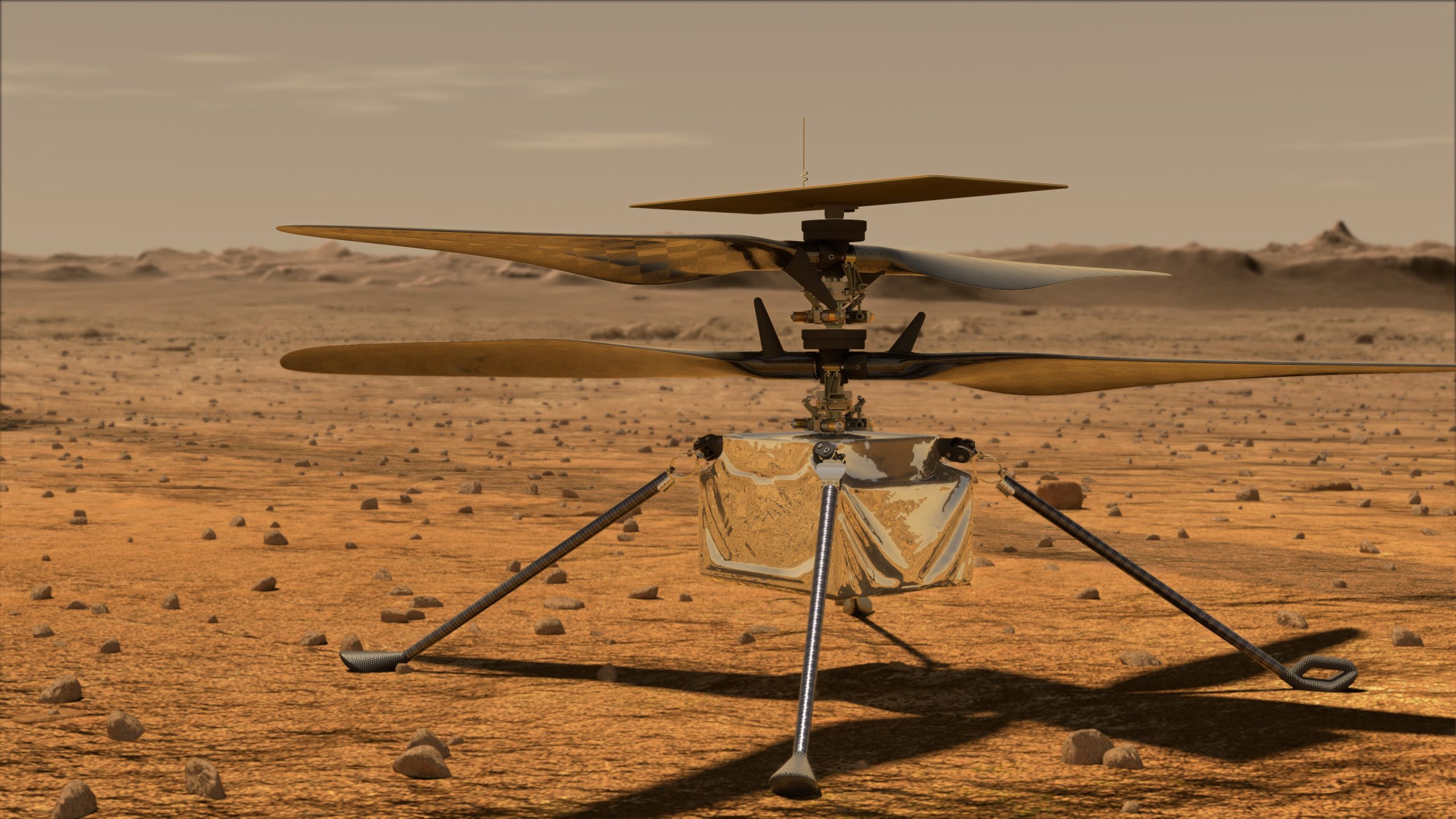
Ingenuity helicopter, source: NASA
Taking inspiration from Leonardo’s concept, the engineers at NASA were prompted to solve a series of challenges related to Mars’ atmosphere. The Red Planet’s atmosphere is 99% less dense than Earth’s which makes it difficult for the helicopter to achieve enough lift.
The Aerial Screw is an invention while the Ingenuity is an innovation.
What is innovation?
Innovation sits at the intersection of customer desires, technology and business opportunities.
Innovation is defined as something new to the market that creates economic and customer value through research, creativity and invention.
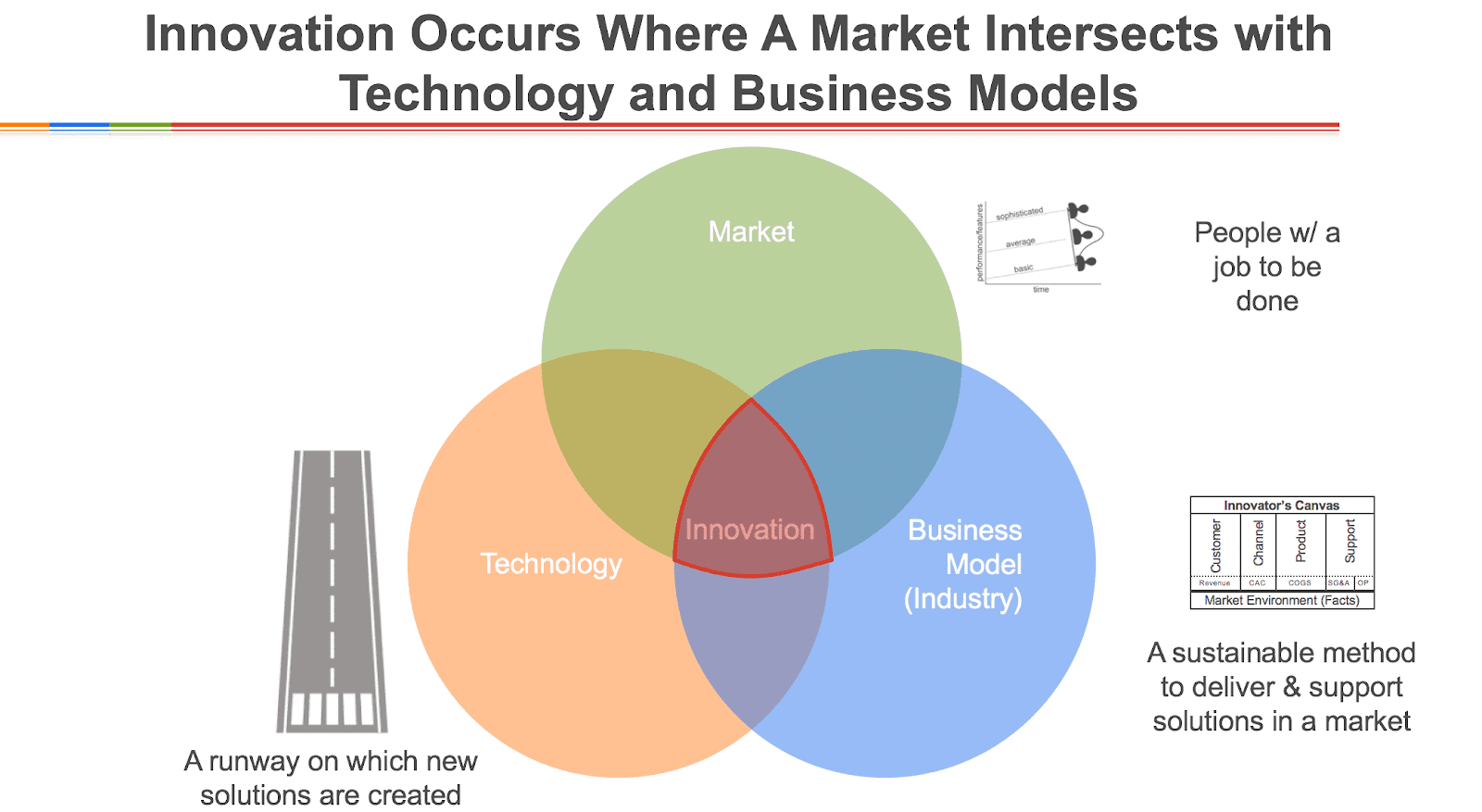
source: ignitionframework.com
Innovation occurs where a market intersects with technology and business models.
The market is composed of people with a job to be done. The business model is a sustainable method to deliver and support solutions in a market. Technology is a runway on which new solutions are created.
Innovators start with the market in mind and what the customers want or need.
Technology is not a goal, it’s a means to an end. Innovators ask themselves How can I use technology to address an unmet need in the market? What technology-driven solution can I come up with that provides customers with a solution to their problems and revenue for the company?
This is what innovators think about when they wake up in the morning and when they go to sleep at night.
The 4 types of innovation
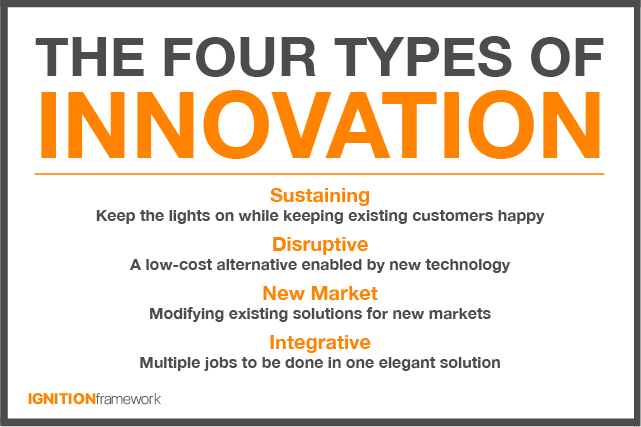
Jake Nielson, a marketing leader with 10+ years of innovation management experience came to the conclusion that there are 4 types of innovation:
- sustaining innovation;
- disruptive innovation;
- new market innovation;
- integrative innovation.
Sustaining innovation
Apple is an example of sustaining innovation. Since the first iPhone in 2007, the company has come up with new iterations of the iPhone every year. Every iteration had new features, improved functionality, beautiful design and innovations.
Disruptive innovation
Airbnb disrupted the hospitality industry. Uber disrupted the taxi industry. Netflix disrupted the DVD mail service. Amazon disrupted brick and mortar commerce. All four provide a better alternative enabled by new technology.
New market innovation
BMW has been manufacturing conventional cars since the early 1950s. Starting with the 1970s, the German car maker has been researching and testing electric cars. Today BMW electric cars are among the best in the market and the company is planning to offer plug-in hybrid versions of all its core-brand models.
Integrative innovation
MailChimp started out as an email provider for small businesses. The company’s email service was so successful that it became one of the most popular in the world. Listening to their customers’ needs, MailChimp expanded its services. MailChimp is now more than an email service provider, it’s an all-in-one marketing platform which empowers its users to build landing pages, create digital campaigns and leverage powerful insights. It supports small businesses to reach their marketing goals faster.
What type of innovation is your company developing?
Join the Conversation
We’d love to hear what you have to say.
Get in touch with us on our LinkedIn Page, Facebook Page, Twitter or TikTok.
Perseverance, NASA’s newest rover has safely landed on Mars
Yesterday, February 18, Perseverance, NASA’s newest rover, landed safely on Mars.
It took the rover seven months to reach the Red Planet where it will spend at least one Mars year (two Earth years) to fulfil its mission.
Miss my landing? Catch the highlights below.
Send us your own highlights too. Share your pictures and video using #CountdownToMars. pic.twitter.com/OL2wSAi36e
— NASA’s Perseverance Mars Rover (@NASAPersevere) February 19, 2021
What is Perseverance?
Perseverance is the most sophisticated rover the American organization has ever sent to the Red Planet.
It cost NASA almost $3 billion to design, develop and launch.
This landing is the latest success in a series of fails and success during the Mars exploration mission. The mission has been unfolding for the past sixty years of relentless work with the sole purpose of finding whether or not Mars could one day be a home away from home for us, humans.
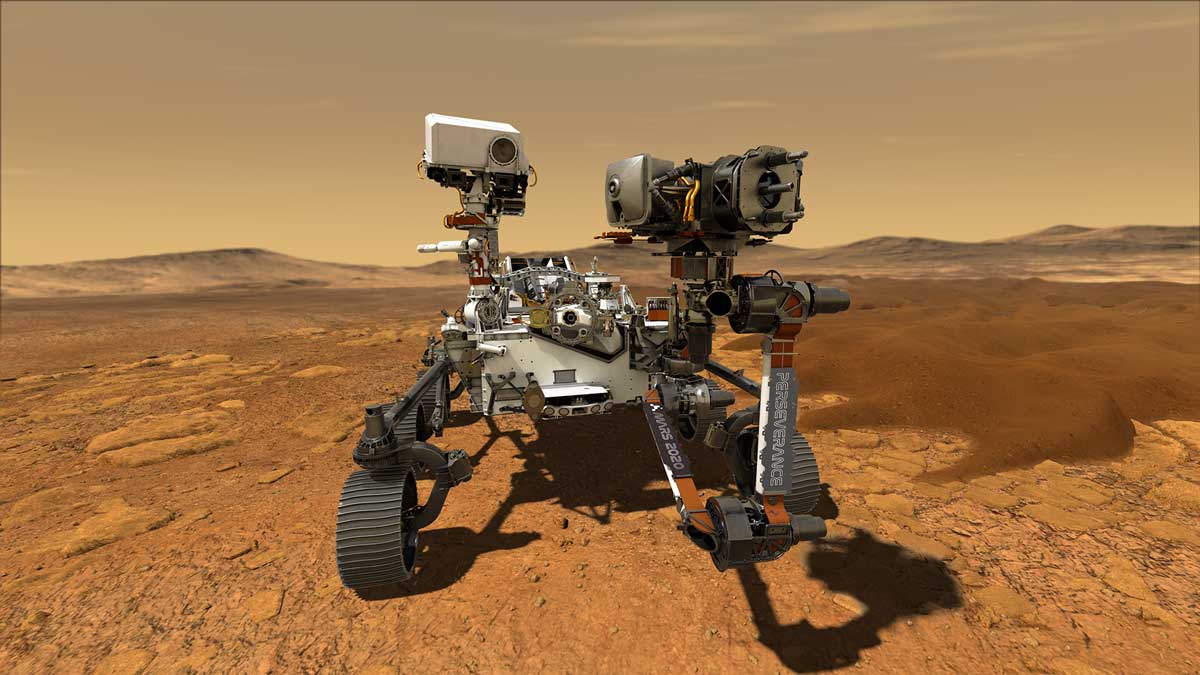
Perseverance rover
Mars exploration began in the late 1960s.
In the first stage of the Mars exploration mission, NASA launched several spacecraft which successfully carried out flybys.
Then, during the 1970s, the mission entered the next stage of placing artificial satellites in the orbit of the Red Planet.
In the 1990s, NASA designed and launched landers like the Pathfinder and the Viking rovers.
The 2000s ushered in not only a new century but a high-technology stage of the human exploration of Mars. Going from orbiting Mars to exploring the planet’s surface is a great engineering feat. Rovers Spirit and Opportunity had far greater mobility than the Pathfinder and carried a sophisticated set of instruments to search for evidence of liquid water that may have been present in the planet’s past.
“Every time we do a launch or we do a landing, we get two plans. One plan is the one we want to do, and then there’s that second plan.” – #NASAScience‘s @Dr_ThomasZ celebrates a successful #CountdownToMars landing by ripping up the contingency plan. pic.twitter.com/pexxK5a07d
— NASA (@NASA) February 18, 2021
The Perseverance rover’s mission is to seek signs of ancient life by exploring the landing site and gather rock and soil samples that scientists could analyze in 2031.
The robot is 3 meters long and 2 meters tall. It is fitted with an autopilot for avoiding hazards and a set of sensors for gathering data during the landing. The rover drives faster in challenging terrain than previous rovers thanks to a new autonomous navigation system. Its system is powered by a generator that uses the heat from the natural decay of plutonium-238 to generate
electricity.
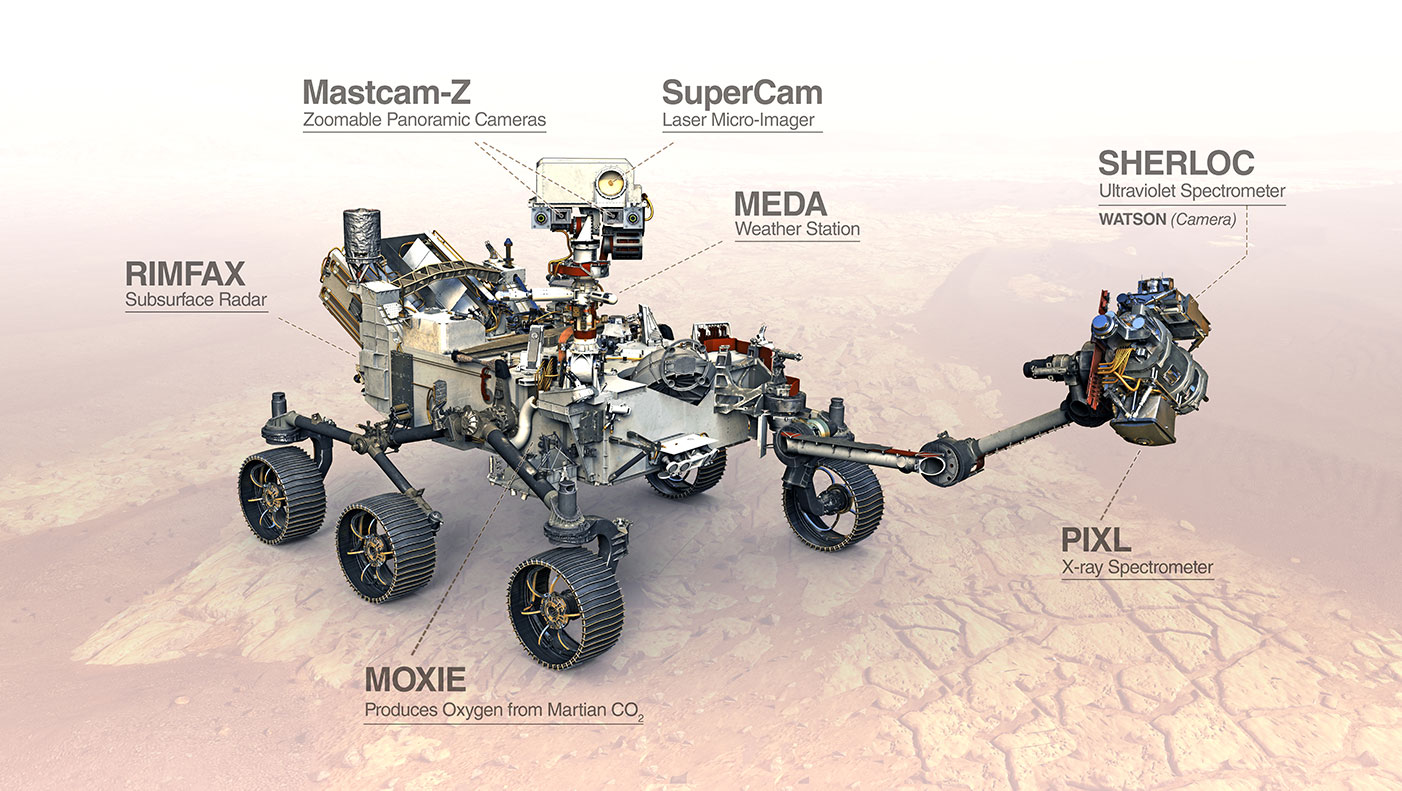
Technology on the Perseverance rover/source: spectrum.ieee.org
Perseverance rover is taking the exploration of an alien planet surface one step further. The robot carries seven instruments to conduct unprecedented science and test new technology on the Red Planet.
7 high-tech instruments for exploring the Martian surface
1. Mastcam-Z
Mastcam-Z is an advanced camera system with panoramic and stereoscopic imaging capability with the ability to zoom. The instrument also determines the mineralogy of the Martian surface and assists with rover operations.
2. SuperCam
SuperCam is an instrument that provides imaging, chemical composition analysis, and mineralogy at a distance.
3. PIXL (Planetary Instrument for X-ray Lithochemistry)
PIXL is an X-ray fluorescence spectrometer and a high-resolution imager that permit more detailed detection and analysis of chemical elements than ever before.
4. SHERLOC (Scanning Habitable Environments with Raman & Luminescence for Organics and Chemicals)
SHERLOC is the first UV Raman spectrometer to fly to the surface of Mars. It provides fine-scale imaging and mapping of mineralogy and organic compounds.
5. MOXIE (Mars Oxygen In-Situ Resource Utilization Experiment)
MOXIE is a technology demonstration that will produce oxygen from Martian atmospheric carbon dioxide. If successful, MOXIE’s technology could be used by future astronauts on Mars to burn rocket fuel for returning to Earth.
6. MEDA (Mars Environmental Dynamics Analyzer)
MEDA is a set of sensors that will provide measurements of temperature, wind speed and direction, pressure, relative humidity, and dust size and shape.
7. RIMFAX (The Radar Imager for Mars’ Subsurface Experiment)
RIMFAX is a ground-penetrating radar that will provide centimetre-scale resolution of the geologic structure of the subsurface.

Ingenuity helicopter
Attached to Perseverance’s belly came to Mars another piece of high-tech, Ingenuity.
Ingenuity is a helicopter the size of a chihuahua that will test powered flight on another world for the first time.
Developed in collaboration with AeroVironment, a drone company, Ingenuity features four specially made carbon-fibre blades, that spin many times faster than a passenger helicopter on Earth.
Why? Because the Mars atmosphere is 99% less dense than Earth’s which makes it difficult for the helicopter to achieve enough lift.
The helicopter has innovative solar cells, batteries, and other components. Ingenuity is designed to perform several activities autonomously, with no help from its human operator like keeping warm in the minus 130 degrees Martian cold nights or charging itself during the day.
Good luck, Perseverance! Fly safely, Ingenuity!
Join the Conversation
We’d love to hear what you have to say.
Get in touch with us on our LinkedIn Page, Facebook Page, Twitter or TikTok.
NASA and Virgin Orbit have 3D-printed a rocket engine part
NASA and Virgin Orbit have successfully test-fired 3D-printed combustion chambers made from multiple materials.
Find out more in the video!
Join the Conversation
We’d love to hear what you have to say.
Get in touch with us on Facebook Group and Twitter.
Flying taxis by 2020 – a myth or a real posibility?
According to IGN News, UberAir wants to bring on-demand electric flying taxis to Los Angeles and Dallas-Fort Worth by 2020 and a trip across Los Angeles via air would be roughly the same price as a ride in an UberX.
“Uber’s participation in NASA’s UTM (Unmanned Traffic Management) Project will help the company’s goal of starting demonstration flights of uberAIR in select US cities by 2020. Uber wants to “explore other collaboration opportunities with NASA” with a view to open <<a new market of urban air mobility>>,” the ride-sharing company said in a statement, quoted by Economic Times.
Moreover, the flights will have a pilot during initial flights, but could be automated in the future.
“Uber is working with the cities of Dallas-Fort Worth and Dubai to get pilot programs launched. Dallas mayor Mike Rawlings and Fort Worth mayor Betsy Price both had expressed support in making the metropolitan area the first to experiment with VTOL and Uber’s Elevate pilot program. Uber also entered into a partnership with Dubai’s road and transportation authority to study demand in the region to work on pricing and network optimization. Dubai is also where Uber will attempt at unveiling the first public demonstration as part of the 2020 World Expo,” wrote Nathan Ingraham for engadget.com.
Accodring to Sarwant Singh and his opinion for Forbes, there are over 15 start-ups, globally, that are actively involved in building a future flying car, by his firm’s count. “The majority of these companies are based in the United States, however, there are participants from a host of other countries including the UK, France, Germany, Russia, Slovakia, Israel, Russia and Japan. Companies such as PAL-V, Terrafugia, Aeromobil, Ehang, E-Volo, Urban Aeronautics, Kitty Hawk and Lilium Aviation, have completed at least one test flight of their flying car prototypes. PAL-V has gone a step further and initiated the pre-sales of its Liberty Pioneer model flying car, which the company aims to deliver by the end 2018,” said Singh.
Also, Airbus plans to test Vahana, their personal mobility flying car by 2018, and aims to build a mass transit flying vehicle as part of its long term air transport strategy. Furthermore, the company showcased an air drone powered flying car at the Geneva Motor Show, which it plans to develop in collaboration with Italdesign.
As the advantages are easily seen by everybody (less time spent in traffic, non pollution, better views, higher adrenaline, etc), we see no disadvantages yet besides the possible accidents that might happen until the technology is well established.
Still, Tesla CEO Elon Musk told Bloomberg’s Max Chafkin he thinks flying cars are a dumb idea for city travel in a profile about his tunnel plans, on Business Insider.
“Obviously, I like flying things,” Musk told Bloomberg. “But it’s difficult to imagine the flying car becoming a scalable solution.” According to Business Insider, Musk said flying cars need to generate a lot of downward force to not fall out of the sky, which would result in a lot of wind and noise for people on the ground. He also said there’s a risk of falling debris if falling cars were to get in a mid-air fender bender.
More reasons for not wanting flying cars you can find in this article. But we are pro.
